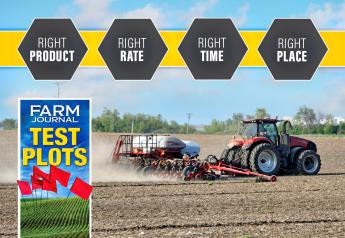Top five articles from ISA Research Program in Iowa

The Advance is a newsletter provided by the Iowa Soybean Association Research Program. The goal of the research program and On-Farm Networks in Iowa is to improve the competitiveness of Iowa soybean farmers by continuously improving soybean productivity, natural resource management and profitability of environmentally sound cropping systems.
Articles of on-farm research are published to share results. The editors of "The Advance" provided their top five articles of the year.
5. Farmed potholes: Money maker or profit taker? As we ring in the New Year, let's reflect back on 2015. Enjoy our countdown of the Top 5 articles of year. No. 5: Reducing risk and being profitable are central business considerations for farmers. Now consider, despite high commodity prices in recent years, some farmers continually underperform or lose money on specific acres — prairie potholes. Read more...
4. Nitrogen research makes a difference. No. 4: The Iowa Soybean Association's (ISA) On-Farm Network is engaging with farmers to better understand the four R's of nutrient management: right rate, right time, right source and right placement.
3. Farmers hitting pay-dirt with water quality. No. 3: Understanding weather and climate is crucial for success in agriculture. As conditions change from one year to the next, farmers adapt to optimize production and environmental performance.
2. Scouting adds value to on-farm studies. No. 2: Over the last decade and a half, the ISA On-Farm Network has completed thousands of on-farm trials. Historically, the primary focus was to assess how different products or practices effect yield in different situations. Yield is still important, but figuring out why a product or practice has a yield response has now become the focus.
1. Brown is the new black: Tillage takes center stage. No. 1: As harvest is coming to a close, many farmers have transitioned into thinking about their fall management practices. For many farmers that includes making decisions regarding their operation's tillage. The most common options farmers have are no-till, strip-till and traditional tillage. Each choice has its own pros and cons that must be weighed depending on a farmer's goals and specific operation. Read more...







